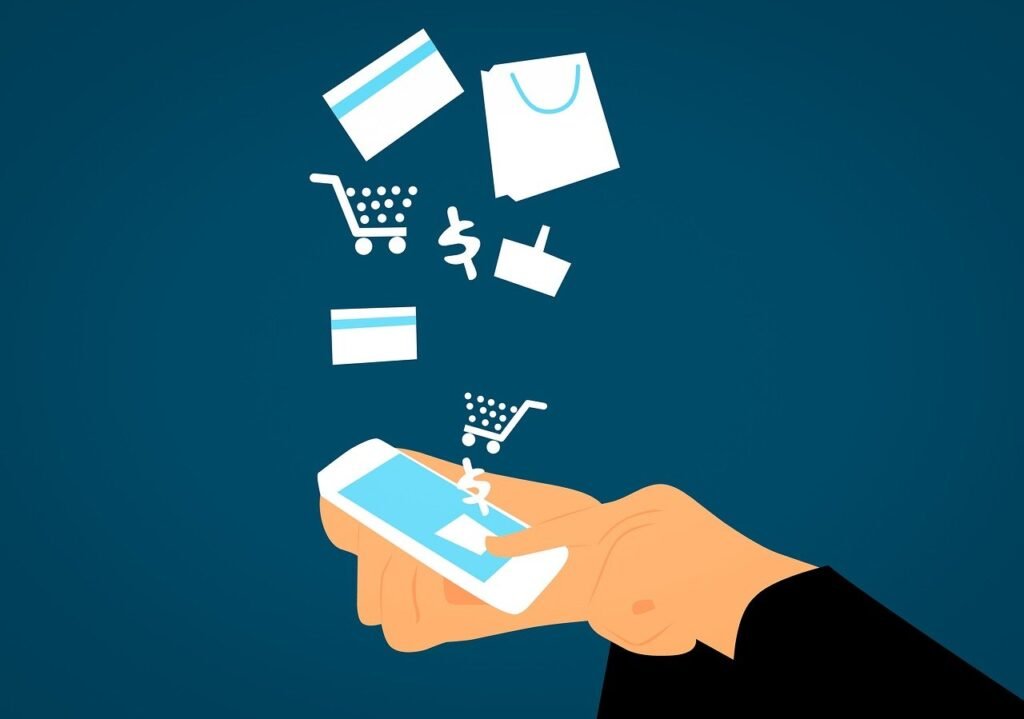In today’s digital age, finding effective distribution channels for your business’s digital cards is essential to optimizing your success. Whether it’s e-gift cards, virtual membership cards, or digital loyalty programs, reaching your target audience and providing a seamless customer experience is key. By exploring different distribution channels, such as mobile apps, social media platforms, and email marketing, you can ensure that your digital cards are easily accessible and widely distributed, allowing your business to thrive in the digital marketplace.
Understanding Digital Cards
What are Digital Cards?
Digital cards, also known as e-cards or virtual cards, are electronic versions of traditional paper cards. These cards can be created and sent digitally, allowing for immediate delivery and a more eco-friendly alternative to physical cards. Digital cards can be used for various purposes, such as greeting cards, gift cards, business cards, or even event invitations. They typically include design elements, personalized messages, and often interactive features to enhance the recipient’s experience.
Benefits of Digital Cards
Digital cards offer several advantages over traditional paper cards. Firstly, they provide instant delivery, eliminating the need for physical transportation. This makes them an ideal choice for last-minute greetings or time-sensitive occasions. Secondly, digital cards are highly customizable, allowing individuals or businesses to personalize them with their own designs and messages. Additionally, digital cards can be easily shared and forwarded, reaching a wider audience compared to physical cards. Lastly, digital cards are environmentally friendly, as they save paper and eliminate the waste associated with physical cards.
Types of Digital Cards
There are various types of digital cards available, catering to different needs and preferences. Greeting cards are a popular choice for personal occasions such as birthdays, holidays, or anniversaries. They often feature animated elements, music, or even personalized videos. Gift cards, on the other hand, are digital equivalents of traditional gift certificates. They can be used for online shopping or redeeming products and services in physical stores. Business cards have also transitioned to the digital realm, allowing professionals to easily exchange contact information digitally. Lastly, event invitations can be sent as digital cards, offering a more convenient and interactive way to invite guests.
Importance of Effective Distribution Channels
Why Distribution Channels Matter
Distribution channels play a crucial role in the success of any business, including those involved in digital cards. These channels serve as the bridge between the manufacturer or creator of the digital cards and the end consumer. Effective distribution channels ensure that the digital cards reach the intended audience in a timely and convenient manner. They help businesses maximize their market reach, increase customer satisfaction, and ultimately drive sales. Without well-planned and executed distribution channels, digital card products may remain undiscovered or underutilized.
Impact on Business Success
Choosing the right distribution channels can significantly impact a business’s success in the digital card industry. By selecting channels that align with the target audience’s preferences and accessibility, a business can maximize its reach and increase the likelihood of conversions. Additionally, effective distribution channels allow businesses to stand out among competitors by providing seamless and convenient access to digital cards. A well-executed distribution strategy can lead to increased brand visibility, customer loyalty, and ultimately a positive impact on the bottom line.
Challenges in Distribution
While distribution channels are essential, they do come with their fair share of challenges. One common challenge is ensuring consistent and reliable delivery of digital cards to recipients. With various digital platforms and devices available, compatibility issues may arise, leading to potential glitches or incorrect display of the digital cards. Additionally, managing inventory and monitoring demand can be challenging, especially during peak seasons or promotional periods. Lastly, security considerations surrounding the distribution of digital cards, such as preventing unauthorized access or piracy, require careful attention and implementation of appropriate measures.

This image is property of pixabay.com.
Choosing the Right Distribution Channels
Identifying Target Audience
Before selecting distribution channels for digital cards, it is essential to identify and understand the target audience. Different demographics and user preferences may influence the choice of distribution channels. For example, if the target audience consists mainly of tech-savvy individuals who frequently use mobile devices, channels optimized for mobile platforms may be prioritized. Conducting market research, analyzing customer profiles, and gathering feedback can help businesses gain insights into the preferred channels and platforms for their specific target audience.
Examining Channel Options
Once the target audience is identified, businesses should explore the various distribution channel options available. Direct distribution channels involve selling digital cards directly through the company’s website, mobile applications, or e-commerce platforms owned by the business itself. Indirect distribution channels, on the other hand, involve partnering with resellers, utilizing third-party marketplaces, or implementing affiliate marketing programs. It is essential to thoroughly evaluate each channel option based on factors such as ease of use, costs, reach, and customer experience.
Evaluating Digital Platforms
When choosing distribution channels, assessing the suitability and functionality of digital platforms is crucial. For digital cards, it is essential to ensure compatibility across different devices and operating systems to reach a wider audience. Mobile apps can be an effective channel for reaching smartphone users, while e-commerce platforms offer convenience for online shoppers. Evaluating the user experience, security features, customization options, and integration capabilities of digital platforms can help businesses make informed decisions about channel selection.
Direct Distribution Channels
Selling Through Company Website
One direct distribution channel option for digital cards is selling them through the company’s website. This allows businesses to have full control over the sales process and customer experience. By designing an intuitive and user-friendly website, businesses can showcase their digital card offerings, provide detailed product information, and enable secure online transactions. Additionally, integrating features such as personalized previews, easy customization, and instant delivery can enhance the overall customer experience.
Mobile Applications
In today’s mobile-dominated world, leveraging mobile applications as a distribution channel for digital cards can be highly effective. Developing dedicated mobile apps allows businesses to provide a seamless and personalized experience to users. Mobile apps can include features such as push notifications for special promotions or reminders, simplified browsing, and one-click purchases. By optimizing the app for different screen sizes and operating systems, businesses can ensure a consistent and user-friendly experience for users.
E-commerce Platforms
Utilizing e-commerce platforms is another direct distribution channel option that can provide businesses with a ready-made infrastructure for selling digital cards. These platforms, such as Shopify or WooCommerce, offer user-friendly interfaces, secure payment gateways, and various customization options. By setting up a store on an e-commerce platform, businesses can quickly start selling their digital cards online, benefit from built-in marketing and SEO tools, and tap into the existing customer base of the platform.

This image is property of pixabay.com.
Indirect Distribution Channels
Working with Resellers
Partnering with resellers can be a valuable strategy for expanding the reach of digital cards. Resellers, such as online retailers or specialized digital card marketplaces, already have an established customer base and the necessary infrastructure in place. By offering digital cards through resellers, businesses can leverage their reach and customer trust. Establishing mutually beneficial agreements with resellers can result in increased exposure and sales opportunities for digital cards.
Third-party Marketplaces
Third-party marketplaces, such as Amazon, eBay, or Etsy, provide businesses with an indirect distribution channel for digital cards. These platforms attract millions of users looking for a wide range of products, including digital items. Businesses can take advantage of these platforms by listing their digital cards on them, reaching customers who actively browse and purchase from such marketplaces. However, it is crucial to carefully review the terms, fees, and policies of each marketplace to ensure they align with the business’s goals and brand positioning.
Affiliate Marketing
Implementing an affiliate marketing program can be an effective way to leverage the reach and influence of third-party websites or individuals. Affiliates promote and sell digital cards on behalf of the business in exchange for a commission on each sale. This distribution channel can be particularly useful in reaching niche markets or specific target audiences. By partnering with relevant websites or influencers, businesses can tap into their existing audience and benefit from the affiliates’ marketing efforts.
Leveraging Social Media for Distribution
Utilizing Social Platforms
Social media platforms have become powerful distribution channels for digital cards. Businesses can leverage platforms such as Facebook, Instagram, Twitter, or Pinterest to promote and sell their digital card products. Creating engaging and visually appealing content that showcases the digital cards can help attract attention and generate interest. By utilizing features like social sharing, businesses can also encourage users to share the digital cards with their friends and followers, thereby increasing reach and potentially driving more sales.
Engaging with Influencers
Influencer marketing can be a highly effective strategy for promoting and distributing digital cards. Collaborating with influencers who align with the target audience and have a significant following can help businesses tap into new markets and gain credibility. Influencers can create content featuring the digital cards, provide reviews or recommendations, and direct their followers to purchase the products. Engaging with influencers can amplify brand awareness and increase the chances of conversion.
Creating Shareable Content
In the age of viral content, creating shareable content is crucial for effective distribution of digital cards. By designing visually appealing and emotionally engaging content, businesses can encourage users to share the digital cards with their social networks. This can be in the form of interactive videos, animations, or eye-catching graphics. Incorporating elements that evoke emotions or connect with the audience’s values can increase the likelihood of users sharing the digital cards, leading to wider exposure and potential sales.

This image is property of pixabay.com.
Collaborating with Retailers and Partners
Forging Partnerships
Collaborating with retailers or partners can open up new distribution channels for digital cards. Businesses can form partnerships with physical retailers, online marketplaces, or complementary businesses to showcase and sell their digital card products. By establishing mutually beneficial partnerships, businesses can leverage the existing customer base and foot traffic of their partners, gaining access to new potential customers. Additionally, these partnerships can foster credibility and trust among customers, leading to increased sales and brand recognition.
In-store Distribution
For digital cards that can be redeemed in physical stores, in-store distribution can be an effective channel. Businesses can work with retail partners to display and sell digital cards at the point of sale, alongside traditional gift cards or other relevant products. By offering the convenience of both digital and physical options, businesses cater to the preferences of different customers and potentially boost sales. In-store distribution also provides an opportunity for businesses to market their digital cards to customers who may not be aware of the digital alternative.
Co-branded Opportunities
Creating co-branded opportunities can enhance the distribution of digital cards. By partnering with well-known brands or recognizable entities, businesses can leverage the partner’s brand equity and reach. Co-branded digital cards can be promoted and sold through the partner’s channels, expanding the business’s distribution network and gaining exposure to new audiences. This strategy allows for cross-promotion and mutual benefits, where both parties share in the success of the digital card distribution.
Promoting Distribution Channels
Advertising and Marketing Strategies
To ensure the success of distribution channels, businesses must employ effective advertising and marketing strategies. By leveraging various digital marketing channels such as search engine advertising, social media advertising, or display advertising, businesses can drive awareness and attract potential customers. Targeted advertising campaigns, tailored messaging, and compelling visual content can capture the attention of the target audience and encourage them to explore and purchase digital cards through the chosen distribution channels.
Search Engine Optimization (SEO)
Optimizing the digital presence for search engines is crucial for driving organic traffic to the chosen distribution channels. By implementing effective search engine optimization (SEO) strategies, businesses can improve their visibility in search engine results when potential customers search for relevant keywords or phrases. Well-crafted content, relevant keywords, optimized meta tags, and user-friendly website architecture are among the key aspects of SEO that can lead to increased organic traffic and improved conversion rates.
Email Marketing
Email marketing can be a powerful tool for promoting digital cards and driving traffic to the chosen distribution channels. By building an email subscriber list, businesses can communicate directly with customers and prospects, keeping them informed about new digital card releases, limited-time offers, or exclusive promotions. Personalized email campaigns, tailored content, and strategic calls-to-action can entice recipients to visit the distribution channels and make a purchase.
Analytics and Optimization
Tracking Performance
To optimize the distribution channels for digital cards, businesses must track and monitor their performance. Analytics tools, such as Google Analytics, can provide valuable insights into various metrics, including website traffic, conversion rates, and user behavior. By regularly reviewing these metrics, businesses can identify areas of improvement, understand customer preferences, and make informed decisions to enhance the distribution channels’ effectiveness. Data-driven optimization allows businesses to continually refine their strategies and maximize the return on investment.
Analyzing Customer Behavior
Understanding customer behavior is crucial for optimizing the distribution channels of digital cards. By analyzing data on customer interactions, preferences, and purchasing patterns, businesses can gain insights into what drives conversions and customer satisfaction. Heatmap analysis, user surveys, and A/B testing can provide valuable data on user experience and highlight areas for improvement. By aligning the distribution channels with customer preferences and addressing pain points, businesses can enhance the overall customer journey and drive better results.
Testing and Iteration
Continuous testing and iteration are key to optimizing distribution channels for digital cards. By conducting split tests, businesses can compare different strategies, designs, or promotions to identify the most effective approaches. Testing landing page layouts, call-to-action buttons, pricing structures, or distribution platform variations can provide valuable insights into what resonates best with the target audience. By consistently optimizing and refining the distribution channels based on data and feedback, businesses can improve conversion rates and maximize the success of their digital cards.
Overcoming Distribution Challenges
Managing Inventory and Demand
Managing inventory and demand can be a challenge in the distribution of digital cards. While digital cards eliminate physical inventory concerns, ensuring an adequate supply of digital cards to meet customer demand requires careful monitoring and planning. Demands can fluctuate, especially during peak seasons or promotional periods, and businesses must anticipate and prepare for surges in orders. By closely tracking sales data and using forecasting tools, businesses can optimize inventory levels, prevent stockouts, and meet customer expectations.
Dealing with Channel Conflict
Channel conflict can arise when multiple distribution channels compete or overlap. Conflicting pricing, promotions, or customer experiences can negatively impact business success. To mitigate channel conflict, businesses must establish clear guidelines and communication channels with partners and resellers. Consistent pricing, exclusive offerings, or targeted promotions for specific channels can help prevent conflict and maintain a harmonious distribution network. Regular communication and collaboration with partners can ensure everyone is aligned and working towards shared goals.
Technology and Security Considerations
The distribution of digital cards involves technological and security considerations. Ensuring compatibility across different devices, operating systems, and platforms is essential for delivering a seamless user experience. Businesses must invest in robust technology infrastructure, adopt industry-standard security measures, and regularly update their systems to protect customer data and prevent unauthorized access. Continuous monitoring of security vulnerabilities and staying informed about industry best practices is vital to maintain the trust of customers and safeguard the distribution channels.
In conclusion, effective distribution channels are crucial for maximizing the success of digital cards. Understanding the various types of digital cards, such as greeting cards, gift cards, business cards, and event invitations, allows businesses to tailor their distribution strategies accordingly. Choosing the right distribution channels involves identifying the target audience, examining channel options, and evaluating digital platforms. Direct distribution channels, such as company websites, mobile applications, and e-commerce platforms, offer control and customization opportunities. Indirect distribution channels, such as resellers, third-party marketplaces, and affiliate marketing, expand reach and tap into existing customer bases. Leveraging social media, collaborating with retailers and partners, and promoting distribution channels through advertising, SEO, and email marketing drive awareness and engagement. Analytics and optimization help track performance, analyze customer behavior, and continuously improve distribution strategies. Overcoming challenges like inventory management, channel conflict, and technology considerations ensures the smooth distribution of digital cards. By implementing effective distribution strategies, businesses can optimize their distribution channels and maximize the success of their digital card products.





